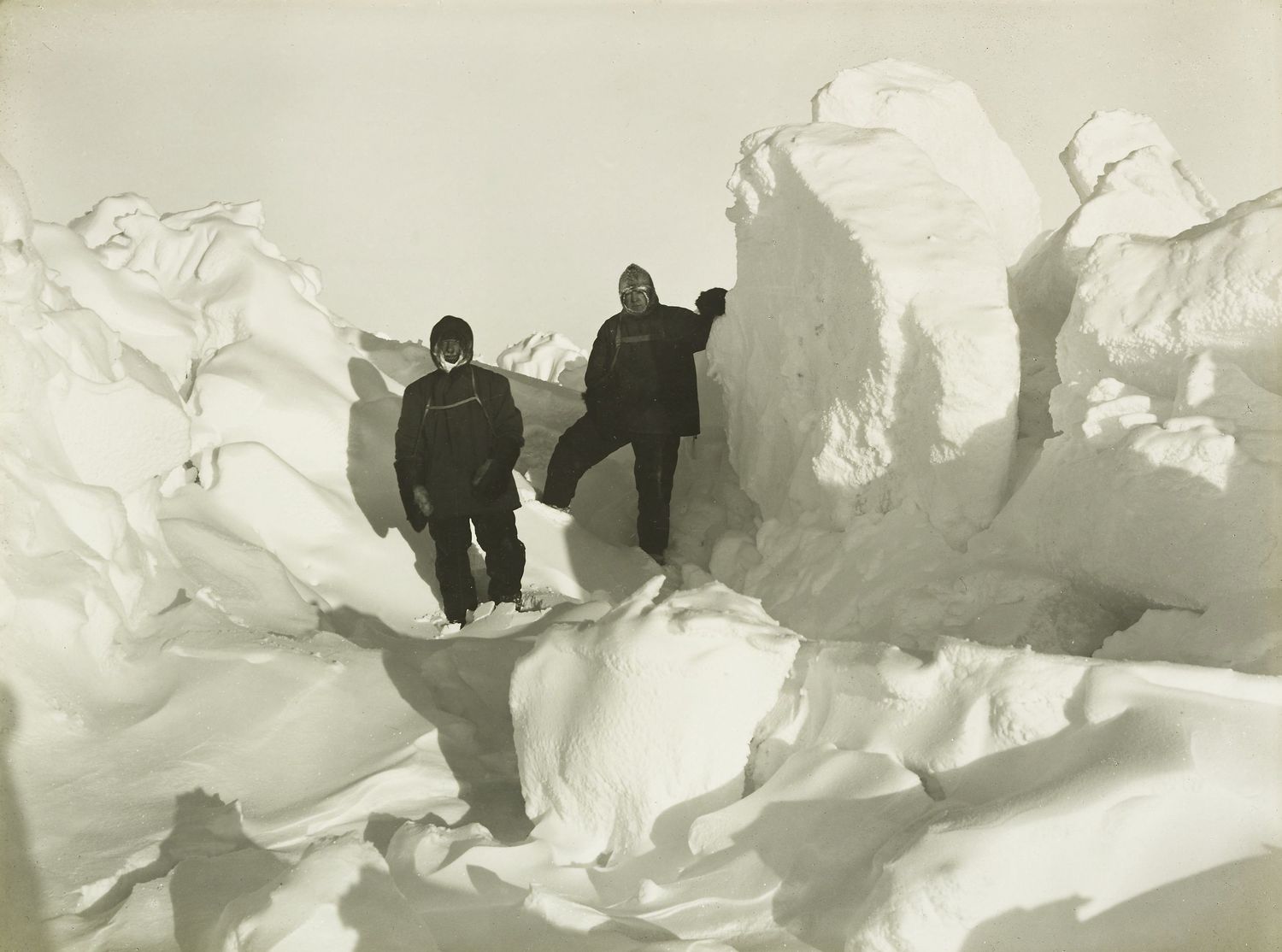Difference between revisions of "Template:POTD protected"
Westarctica (talk | contribs) |
Westarctica (talk | contribs) |
||
| Line 1: | Line 1: | ||
{| role="presentation" style="margin:0 3px 3px; width:100%; text-align:left; background-color:transparent; border-collapse: collapse; " | {| role="presentation" style="margin:0 3px 3px; width:100%; text-align:left; background-color:transparent; border-collapse: collapse; " | ||
|style="padding:0 0.9em 0 0;" | [[File: | |style="padding:0 0.9em 0 0;" | [[File:WildAndShackleton.jpg|300px]] | ||
|style="padding:0 6px 0 0"| | |style="padding:0 6px 0 0"| | ||
The '''[[ | The '''[[Imperial Trans-Antarctic Expedition]]''' (1914–17), also known as the '''[[Endurance]] Expedition''', is considered the last major expedition of the Heroic Age of Antarctic Exploration. Conceived by Sir [[Ernest Shackleton]], the expedition was an attempt to make the first land crossing of the Antarctic continent. After the conquest of the [[South Pole]] by [[Roald Amundsen]] in 1911, this crossing remained, in Shackleton's words, the "one great main object of Antarctic journeying"." The expedition failed to accomplish this objective, but became recognized instead as an epic feat of endurance. | ||
This photograph was taken by Frank Hurley during the Imperial Trans-Antarctic Expedition and published in the United States in Ernest Shackleton's book, ''South'', in 1919. | |||
<p><small>Photographer: Frank Hurley</small></p> | |||
<p><small> | |||
[[:Category:Images|'''(More Featured Images)''']] | [[:Category:Images|'''(More Featured Images)''']] | ||
<div class="potd-recent" style="text-align:right;"> | <div class="potd-recent" style="text-align:right;"> | ||
Revision as of 20:33, 23 September 2018

|
The Imperial Trans-Antarctic Expedition (1914–17), also known as the Endurance Expedition, is considered the last major expedition of the Heroic Age of Antarctic Exploration. Conceived by Sir Ernest Shackleton, the expedition was an attempt to make the first land crossing of the Antarctic continent. After the conquest of the South Pole by Roald Amundsen in 1911, this crossing remained, in Shackleton's words, the "one great main object of Antarctic journeying"." The expedition failed to accomplish this objective, but became recognized instead as an epic feat of endurance. This photograph was taken by Frank Hurley during the Imperial Trans-Antarctic Expedition and published in the United States in Ernest Shackleton's book, South, in 1919. Photographer: Frank Hurley |